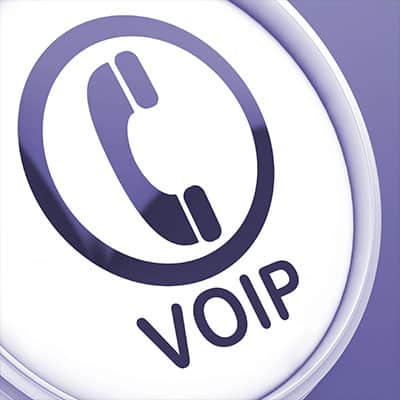In the ever-evolving landscape of business technology, acronyms like BYOD (Bring Your Own Device) have become part of the everyday lexicon. While the term may not evoke the same excitement as a casual Friday happy hour, at SRS Networks, we’re here to ensure that the integration of BYOD into your business is not only seamless but also cause for celebration. So, why not bring your own drinks and let’s toast to the best in tech! The Era of BYOD BYOD signals a tech shift in business. Employees favor personal devices, posing integration challenges. Seamlessly aligning diverse gadgets to a secure network becomes crucial. It’s about blending individual tech choices into cohesive business goals. Seamless Integration with SRS Networks At SRS Networks, we understand the importance of harnessing the potential of BYOD without compromising on security or efficiency. Our team of experts is well-versed in the intricacies of BYOD integration and will work with you to create a tailored solution that meets the unique needs of your business. The Best Tech for Your Business BYOD doesn’t mean compromising on the quality of technology used in your business. In fact, it’s an opportunity to ensure that your employees have the best tools at their disposal. SRS Networks will assess your business requirements and recommend devices and solutions that enhance productivity while maintaining the security of your data. Celebrate Freedom and Efficiency Imagine a workplace where employees have the freedom to use their preferred devices, leading to increased satisfaction and efficiency. With SRS Networks, this vision becomes a reality. Our BYOD solutions empower your workforce, allowing them to work from their own devices while ensuring a secure and well-integrated network. Security at the Forefront One of the primary concerns with BYOD is the potential security risks associated with diverse devices accessing company data. SRS Networks takes a proactive approach to address these concerns. Our security measures are robust, ensuring that your data remains protected, whether accessed from a company-owned device or an employee’s personal laptop or smartphone. BYOD: More Than an Acronym BYOD is more than just an acronym – it’s a mindset that embraces flexibility and efficiency. With SRS Networks as your technology partner, BYOD becomes a strategic advantage rather than a challenge. We’ll guide you through the implementation process, making sure that your business experiences the benefits without the headaches. Bring Your Own Drinks, Let Us Handle the Tech After a successful BYOD integration, why not celebrate? Bring your own drinks and toast to the seamless collaboration and efficiency that SRS Networks brings to your business. With our expertise, you can confidently embrace the era of BYOD, knowing that your technology is in good hands. Your Business, Your Devices, Our Expertise Ready to take the leap into the world of BYOD without worries? Work with SRS Networks, and let’s elevate your business to new heights. Bring your own devices, bring your own drinks, and let’s celebrate the perfect blend of technology and efficiency. Cheers to a future where your business thrives with the best in tech!
In a world where technology evolves at a dizzying pace, staying up-to-date with the latest trends can be a daunting task. One such innovation that has become synonymous with modern connectivity is Bluetooth. Yet, for many businesses, embracing this wireless technology can be more challenging than it seems. At SRS Networks, we understand the importance of staying with the times, and we’re here to guide you seamlessly into the era of Bluetooth technology. The Challenge of Keeping Up As technology advances, businesses often find themselves caught in the struggle of keeping up with the latest trends. Bluetooth, initially introduced as a wireless communication standard, has evolved far beyond its humble beginnings. From connecting headphones and speakers to facilitating data transfer between devices, Bluetooth has become an integral part of modern connectivity. However, navigating the intricacies of Bluetooth technology can be complex, leading many businesses to second-guess whether they are following the right tech trends. Streamlining Connectivity with Bluetooth SRS Networks recognizes the need for businesses to adopt cutting-edge solutions without the burden of complexity. Bluetooth technology, with its potential for wireless collaboration and improved efficiency, shouldn’t be a source of confusion. Our team of experts is here to streamline the integration of Bluetooth into your business operations, ensuring you reap the benefits without the headache. Wireless Efficiency at Your Fingertips Bluetooth technology offers a myriad of possibilities for businesses looking to enhance their operational efficiency. Imagine a workplace where devices seamlessly communicate without the hassle of tangled wires. From file transfers and data synchronization to hands-free communication, Bluetooth can revolutionize the way your business operates. SRS Networks makes this transition smooth, so you can focus on what matters – your core business activities. Tailored Solutions for Your Business At SRS Networks, we understand that every business is unique, and there is no one-size-fits-all solution. Our approach involves a detailed analysis of your business requirements, operations, and goals. Whether you’re looking to integrate Bluetooth for seamless communication or to enhance your customer experience, we tailor our solutions to ensure a perfect fit. Future-Proofing Your Business Technology is ever-changing, and future-proofing your business is crucial for long-term success. Bluetooth technology continues to evolve, with each iteration bringing improved features and capabilities. With SRS Networks by your side, you won’t have to second-guess whether you’re following the right tech trends. We stay ahead of the curve, ensuring your business remains at the forefront of technological innovation. Embrace the Wireless Future Don’t let the challenges of staying with the times hold your business back. Embrace the wireless future with SRS Networks‘ Bluetooth solutions. Say goodbye to the hassle of cords and wires, and hello to a more efficient and connected workplace. Ready to cut the cord and step into the future? Work with us, and let’s navigate the world of Bluetooth technology together. Your business deserves the best, and at SRS Networks, we deliver.
The traditional method of telephony may have been the standard for business communication for a long time, but it has since fallen out of favor compared to more modern, more flexible tools like Voice over Internet Protocol. VoIP is an exceptionally useful tool that all organizations can benefit from implementing. Let’s discuss some of the benefits that your business can leverage to its advantage as a result of using VoIP.
Video conferencing has become commonplace over the past few years, even as people return to their offices in the downturn of the COVID-19 pandemic. Many organizations had their hand forced into finding solutions for remote workers and it turns out that video conferencing has been a viable one. Today, we will go through some of the features you need to have in an effective video conferencing solution.
Remote work might be a somewhat new concept for some organizations, but it has proven to be an exceptionally helpful tool to have at one’s disposal. All that said, however, there are certain weaknesses that must be addressed if you want to take full advantage of the cloud, with one of them being the disconnection that comes from remote work. What does this disconnect mean for your business?
Unified communication is one of the most important parts of running a business. When your team is working together toward a common goal, they require the use of a solution that enables them to work seamlessly. Thankfully, unified communication tools give your team a way to make operations easy and a method for bolstering company culture. Let’s talk about how your organization can implement unified communication tools and benefit from them.
Here, we’ll discuss the concept of smart scheduling, and how your business can benefit from it. What Smart Scheduling Is Smart scheduling software solutions are typically used in industries that see a lot of fluctuations in consumer demand and are subject to considerable outside influence. This has given them a place in many industries, notably retail, as demand can rise and drop dramatically based on just a few factors. Smart scheduling solutions can assist a business to schedule its employees to match these varying needs, automating these processes to simplify your workload. However, if we want to apply these smart scheduling ideals to all industries, it’s helpful to consider it as more of a process than as a technology. Doing so just makes sense, as every business must deal with factors that can—and often do—have an impact on its operations. In this context, smart scheduling is just taking anticipated factors into account and adjusting our plans to accommodate them. It’s a fast food restaurant ensuring that it’s operating with all hands on deck when the factory next door breaks for lunch. In simple terms, it’s anticipating the conditions in your business and making the appropriate preparations. How to Schedule with Smart Scheduling in Mind Even if you aren’t using a dedicated solution meant to help you schedule “smartly,” there are a few ways that you can implement these principles. For instance: Consolidate Your Information—Assemble any information that you have that could impact your schedule, as this will help you to proactively prepare for any circumstances that may arise. For example, if your business is scheduled to be closed for a holiday but there are some large projects that need to be scheduled beforehand. Understanding what your team is currently assigned to and how those responsibilities measure up can help you make crucial decisions to ensure your critical tasks get done. Embrace Communication—Communication is going to be massively important for your operational success, so your schedule needs to communicate plenty of detail and context. These practices can also help empower your team members. Adopt a Scheduling Platform—There are many options now available for you to use as a scheduling tool. Finding one that simplifies your workload management and implementing it will benefit your entire operation. Whether you’re seeking out a solution to address your scheduling needs, or any other technology requirement your business has, SRS Networks can help. To find out more, give us a call at (831) 758-3636.
Why is it so Important to Have a Secure Conferencing Solution? Prioritizing security is a consideration that needs to be made on every part of your IT. In regards to conferencing, a secure strategy is crucial as these apps are some of the most targeted by cybercriminals right now. Diligently choosing the right technology for your business, and implementing practices that have your business’ cybersecurity in mind, will go a long way toward keeping your business secure as you heavily lean on your conferencing solutions. Some of the video conferencing applications are proven to be more secure than others. With so many people using these applications, it’s important to implement these four security strategies: Create Secure Policies Does your business have a Bring Your Own Device (BYOD) policy? If so, you will want to fashion your video conferencing solution in the same manner. It’s extremely important for your remote employees to understand that while the solution may have some security features baked in, it is on them to use good judgement and not put strain on your cybersecurity infrastructure by ignoring the best practices. Here are some line-items that should be in your policy: Users need permission from all attendees in order to record a meeting. Personal devices should not be used to record meetings. Confidential or sensitive information should not come into view during the meeting unless it is expressly relevant or requested by meeting attendees. All cameras and microphones should be disconnected when not in use. If sensitive information is to be shared, it should be done so securely and not in group meetings. Authentication and Control Many of the most used conferencing apps feature a single-sign on (SSO) system. The SSO makes it easier for administrators to control user access, but it doesn’t necessarily work to secure the solution. If your solution offers two-factor authentication, that is a good way to ensure the person signing into your meeting is the person supposed to be there. Another strategy is to set up domain-based security. This provides network administrators the most comprehensive tool to manage access to video conferencing solutions. Be Sure to Use Encryption Any conferencing solution your company uses should come equipped with 128-bit AES encryption. You will also want to deploy this on the hardware where you run the meetings to ensure that all data sharing that happens during the meeting is protected. Update Your System A video conferencing solution is like any other software system, it needs to be updated and patched regularly. This will make absolutely sure that your systems are protected from any vulnerabilities that would be found in antiquated version builds. Video conferencing is the star of the stay-at-home orders and its place in business has been fortified. Call the security professionals at SRS Networks to get more information about security surrounding your video conferencing apps.
These methods vary wildly but can effectively be split into a few overarching categories: instruction-based, active training, experience-based, and technological. Instruction-Based This is the approach to learning that most are most familiar with, as modern education systems largely rely on it. With the help of visual aids, an instructor presents a lesson to a large group in a classroom setting. Think conferences, seminars, lectures, or presentations, and you’ll have the right idea. This form of training is very efficient to deliver but can be ineffective for the same reasons that make it so efficient. Due to the size of the group, a lot of people can absorb the lesson at once, but there is the chance that the impersonal nature of such a lesson won’t allow the information to be retained… which means that the person delivering the message has to work to keep the attention of the group. If the right energy level can be maintained in proportion to the size of the group, this can be an effective way to teach fundamentals. Active Training Active training is very similar to instruction-based, with one key difference: active training relies quite a lot more on the participation of the person being trained. As a result, active training sessions may have a loose outline of materials to cover, but the lesson relies on the active (hence the name) participation of the person being trained. Harvard University has conducted studies that have shown that active learning techniques result in greater outcomes despite participants feeling as though more traditional teaching methods worked better. A few examples of active training scenarios are workshops, where a relative expert guides the class through a topic, and brainstorming sessions, where participants must contribute thoughts and ideas to overcome a challenge. This version of training can present quite a few benefits, like increased engagement and collaboration between coworkers. However, some people may be reluctant to work in a group, which could potentially limit how effective the lesson really is. Therefore, an instructor’s job also involves monitoring these groups to ensure that everyone is on task and participating. Experience-Based Training This approach is basically the practical application of “practice makes perfect,” as learners are exposed to the situation that the training applies to during the training itself. Because they are observing and participating in the process to learn it, this is a very effective way to teach an employee a process they need to follow and develop the skills in context. This approach can often be fast-paced and high pressure, so it often helps to give trainees additional resources to prepare themselves beforehand. This kind of training can happen through simulated scenarios and role-playing but is most seen in someone shadowing an assigned mentor. Mentorship has often been perceived as more effective amongst existing employees who will soon be elevated to a leadership position, while on-the-job training is most effective with new hires. As a result, different kinds of experiential training could – and perhaps should – be employed at different levels within your organization. Technological Training Of course, we must discuss how technology provides opportunities to train your employees, and how its benefits (like accessibility, efficiency, and progress tracking) can make the entire process simpler for you to manage. The key ingredient that technological training offers is the […]
Let’s begin by defining what a CRM strategy really is, which will help to illustrate why it matters. The Concept of a CRM Strategy Using CRM software has a pretty low bar for entry. Basically, you just have to procure it and populate it with the data you have collected. The purpose of a CRM strategy is to really use your solution to the fullest extent that you can, which allows you to optimize your outcomes. There are a few ways that your CRM strategy can enable you to do so: It condenses data in context to help you reference it as you make decisions and set goals. It makes customer service efforts more comprehensive, which can boost retention and loyalty. It assists you in making sales by scaling your process properly and eliminating redundancy. Naturally, these are benefits that can assist any business in its pursuit of its goals, so it is important that you create a proper CRM strategy to guide you. Here is a simple process for you to follow: Understand Your Goals and Strategize For ThemWhat is it, exactly, that you want your business to accomplish? What is your intended use of your CRM software, and what do you want to achieve with it? How will each department use it to do strive toward their goals? How will your offering be distributed? Once you have conferred with your team and answered these questions, it is time to consider the business landscape and who your ideal clients are. Then, determine what makes your offer different, and commit to providing this difference each time in the way that best suits your prospects. Analyze and Organize Your TeamHow will the introduction of your new CRM software impact your team? Speak with those whose job responsibilities will be affected by your new solution, and look for any past experience with such platforms for their impression of different options. You will also need to identify those team members who will be using the software to collaborate and be sure that everyone understands their particular roles. It is also helpful to determine the goals that each department should strive toward, and identify the key performance indicators that will help measure their progress. Implementing Your New Solution and StrategyDetermine how different contacts will be divided within your CRM, and establish a policy of collecting all the information you need from a contact that is going to be included. You should also strongly consider mapping out your sales processes for each of your services so it is easier to manage your brewing business. It is also a good idea to keep your software requirements in mind when selecting your CRM, as you will want to select a title that plays nicely with your existing solution. Is your chosen email platform Outlook? Make sure to find a CRM that integrates with it for optimal benefits. SRS Networks is here to help you with these considerations, and more. To learn what we can do to assist your customer relationship management through IT solutions, or any other of your business processes, reach out to us at (831) 758-3636.
- 1
- 2








